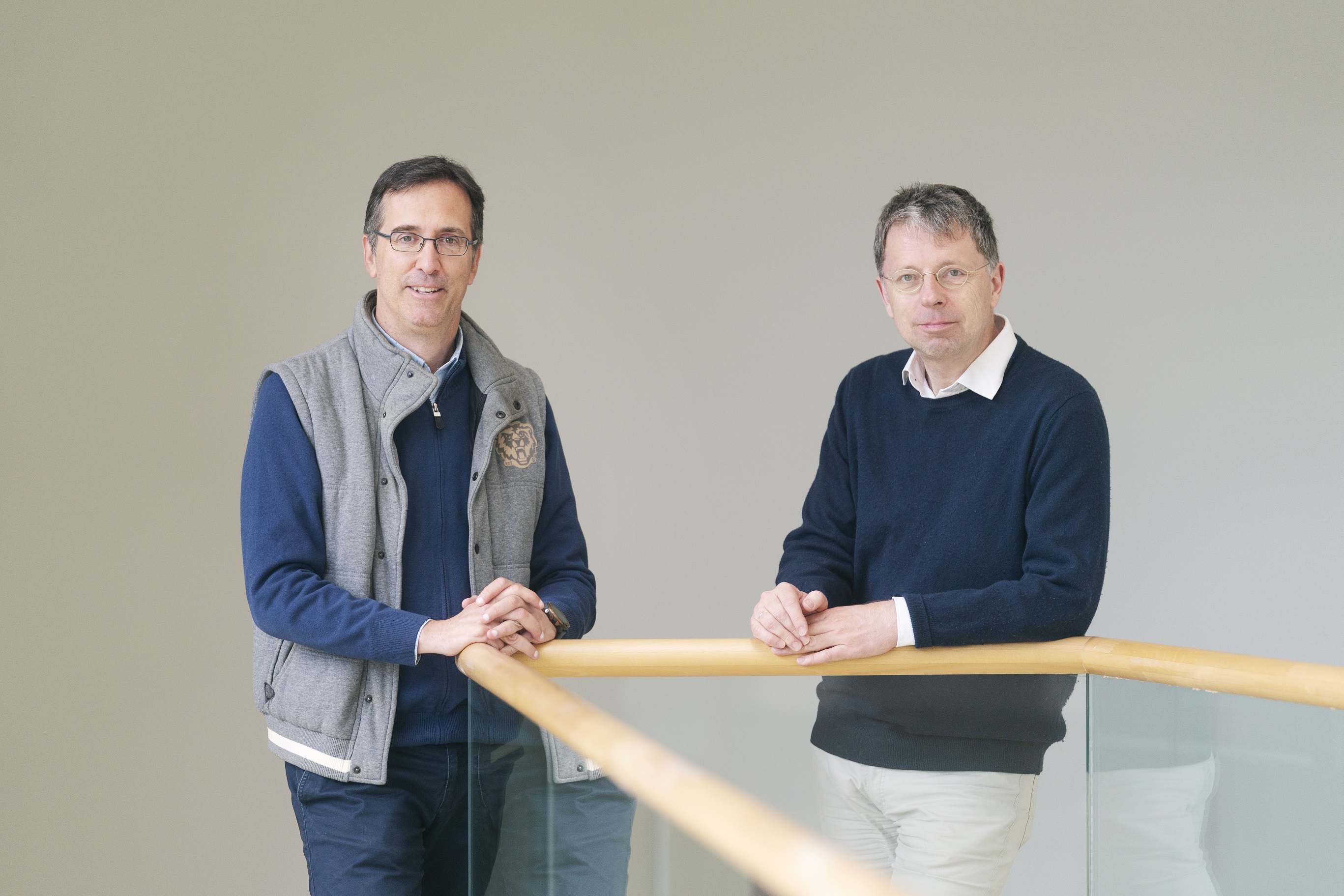Martin Haspelmath, senior researcher at the Max Planck Institute of Evolutionary Anthropology in Leipzig (Germany), is one of the most renowned and influential linguists of our time. He has been trained in various universities (Vienna, Cologne, Buffalo, Moscow, Berlin) and part of his research focuses now on the comparison of grammatical structures of languages, within the so-called linguistic typology, a discipline that explores the similarities and differences between language structures.
Martin Haspelmath: «Languages show a preference for user-friendly grammatical patterns»
- News
First publication date: 15/05/2023

These days, Haspelmath is giving a series of lectures at the Master’s Degree in Theoretical and Experimental Linguistics (Faculty of Arts) under the title ‘Universals of grammatical coding: cognitive and evolutionary explanations’. In this context, he is presenting his efficiency theory of grammatical coding (or formal expression), based on the crucial observation that the most common meanings and situations are encoded with less morphosyntactic substance than the less common ones.
On the basis of the efficient (or economical) functioning of language, this theory accounts for the differences in grammatical coding between, for instance, singular and plural forms: the singular value of number (like in the noun ‘book’) is characterized by the fact that it has no more formal elements than the plural value (‘books’). The same holds for the formal contrasts between the verbal present and future or between the positive and the comparative degree of the adjectives (as well as for a whole set of other linguistic contrasts). The reason for these differences lies in the diverse frequency of use of grammatical forms: those which are more frequently used (and are therefore more predictable) tend to have shorter coding than those which are less frequently used (which are less predictable). This reflects a linguistic preference towards user-friendly patterns.
It is a robust generalization, which apparently has no significant counter-evidence; it can thus be regarded as universally valid, and as a truly important contribution to general linguistics. Haspelmath has previously studied various aspects of the grammatical structure of languages, from passive and causative sentences to indefinite pronouns and so-called serial verb constructions, mostly from a comparative perspective, using data from a wide range of languages. In 1993 he published the descriptive grammar of Lezgian (a language from Dagestan, in the Eastern Caucasus), which remains the fundamental reference for the study of this language. But Haspelmath is also well known in the world of linguistics for having coordinated or led global typological projects of magnitude, such as the World Atlas of Linguistic Structures (WALS, with an electronic edition since 2008) or the Atlas of Pidgin and Creole Languages (2013).
One of the main tasks that Haspelmath has addressed throughout his career has been to define linguistic phenomena, especially in the realms of morphology and syntax. He observes that the analysis of linguistic phenomena must be based on precise and rigorous definitions, which must then be applied consistently. In his view, it is necessary to rethink and criticize linguistic terms, no matter how deeply they happen to be rooted in the history of linguistics. No element of analysis can be accepted automatically just because it has traditionally been used by linguists. On the contrary, a scientific approach obliges us to question, or at least to test (and reflect upon) the categories and uses inherited. As Haspelmath ironically observes, grammatical terminology is usually a ‘minefield’ for linguists.
His critical assessment of various theoretical frameworks (especially of Noam Chomsky’s generative school) rests on an empiricist position that defends the usual sequence between the observation of phenomena, the formulation of verifiable hypotheses, and their necessary testing. In the field of general and comparative linguistics, this means that priority is given to the examination of the data of each language in order to apprehend its essence (and that of languages in general, for that matter) before attempting to formulate any kind of generalization. In this line, Haspelmath emphasizes the need to establish uniform measurement tools or yardsticks that will make the comparative study of grammatical structures feasible and meaningful. In contrast to the innatist view of linguistics, for which some essential components of the biological capacity of language somehow manifest themselves in each human language (something that has not been proven), Haspelmath advocates a non-aprioristic linguistics, within which the direct observation of linguistic phenomena and their comparative study can lead to identifying the common tendencies of languages and even some universal principles of grammatical structure.







